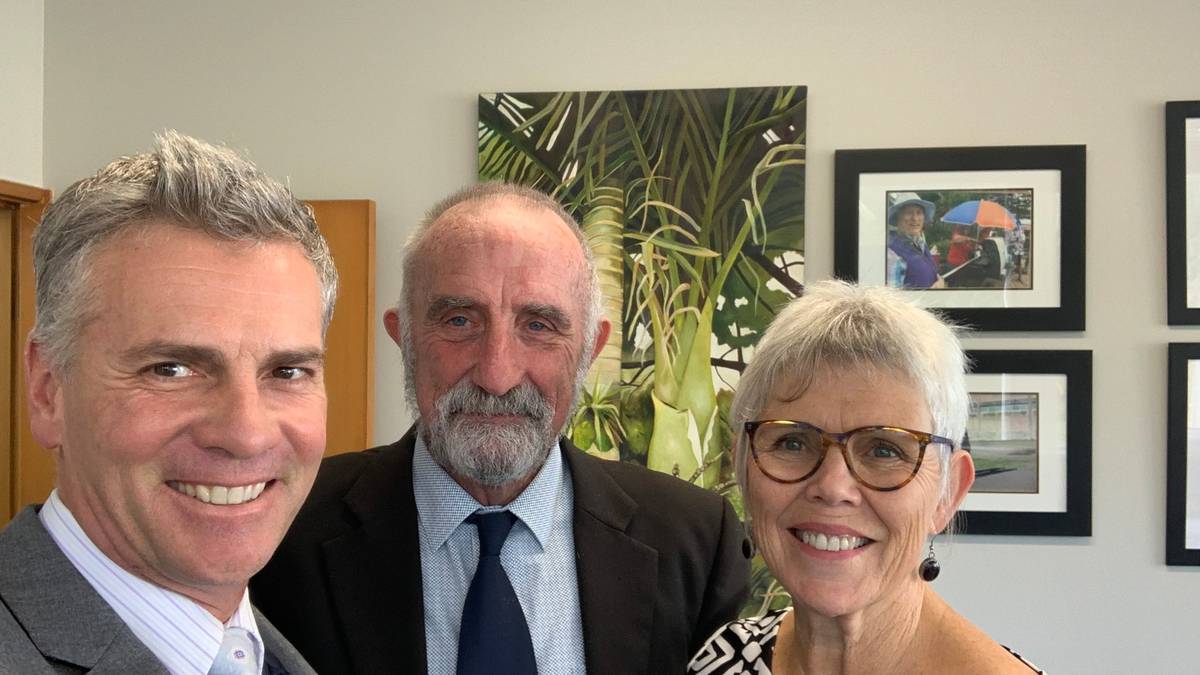Jason Smith, (Kaipara), John Carter (Far North) and Sheryl Mai (Whangārei) are all standing down at October’s local body elections. Photo / Supplied
Northlanders from Mangawhai to Ahipara are throwing their hats in the ring to become the region’s newest mayors from October – amid a tsunami of Tai Tokerau local government leadership change.
The contenders are tilting to helm Northland’s three district councils – Far North, Whangārei and Kaipara – as the biggest combined changes to the landscape of New Zealand’s democracy play out across local government and the country as a whole.
Far North (FNDC) Mayor John Carter, Whangārei (WDC) Mayor Sheryl Mai and Kaipara (KDC) Mayor Dr Jason Smith are all standing down.
The region’s leadership change will also have seen all councils’ chief executives changing by the October 8 local body elections.
Incoming leaders will be working amid major central government-led changes including its controversial Three Waters restructure.
This comes along with its plans for major changes to how local government works, the Resource Management Act and to Significant Natural Areas classifications.
Co-governance is increasing and Māori wards will also be introduced at the October election.
Sitting elected representatives dominate the Far North mayoral race.
They include Deputy Mayor Ann Court, who is also alternately standing as a Bay of Islands-Whangaroa general ward councillor.
The new Far North mayor will earn $162,879 annually and helm council local government democracy for about 70,000 residents.
FNDC will have 11 elected representatives including the mayor from October, up from its current 10. It will also have 19 community board members.
Current FNDC councillors Kelly Stratford and John Vujcich are also mayoral contenders, while also standing as councillors in their current Bay of Islands-Whangaroa and Hokianga-Kaikohe general wards respectively.
Sitting FNDC councillor Moko Tepania is also standing for mayor and as a councillor in its new Ngā Tai o Tokerau Māori ward. Four of the council’s elected representatives are to come from this ward.
FNDC Te Hiku Community Board deputy chair Jaqi Brown is also throwing her hat in the ring to be mayor. She is not standing again for the community board or to be an FNDC councillor.
Meanwhile, would-be Whangārei mayoral candidates include newcomers Mike Budd, Brad Flower, Shaquille Shortland and Fiona Green along with sitting councillors Vince Cocurullo and Ken Couper.
The incoming Whangārei mayor will earn $163,689 annually and representing 100,000 people.
WDC has a 14-member elected council, including the mayor.
In Northland’s south, sitting KDC councillor Victoria del la Varis-Woodcock is standing to be Kaipara mayor.
In February, del la Varis-Woodcock attended the Wellington anti-mandate protests for almost a week, speaking to gathered crowds while there.
Kaipara’s Ash Nayyar is also standing to be KDC mayor.
The KDC mayor will earn $133,501 annually and represent about 25,000 residents. KDC will have 10 elected representatives including the mayor from October, up from its current nine.
Meanwhile the new Northland Regional Council (NRC) chair will be chosen by its nine incoming councillors after the October 8 elections.
Other than would-be mayors, the would-be NRC chair can’t stand for that specific position.
Current NRC Chair Penny Smart is standing as a regional councillor again in her Kaipara constituency, as is deputy chair Justin Blaikie in the council’s much-enlarged new Far North General constituency.
NRC’s chair will be the region’s third-highest paid elected local government leader, earning $133,892 annually and representing about 195,000 Northlanders.
Northland will have 63 elected council representatives across four councils from October – three mayors, a chair, 40 councillors and 19 community board members.
This is up from 61 elected representatives with the addition of one new councillor each for FNDC and KDC.
Official local government election candidate nominations must be lodged by August 12, after which the full Northland candidates’ list can be confirmed.
Voting documents are sent to enrolled voters between September 16 and 21 with voting closing at noon on October 8.
• Public Interest Journalism funded through NZ On Air




